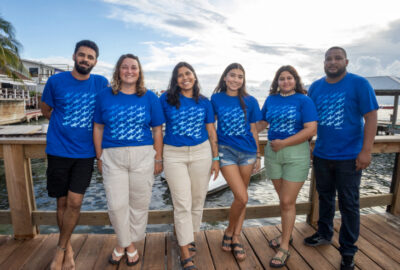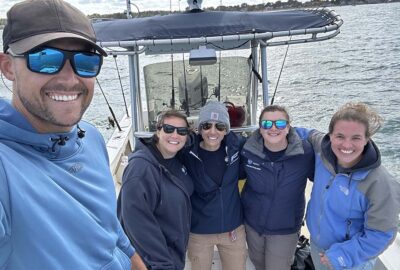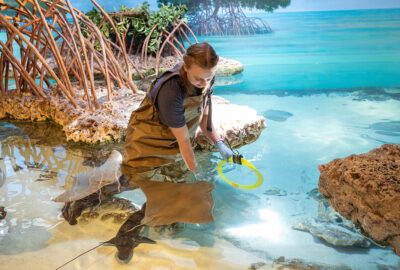The Importance of Shark Tagging
This is the third of a series of posts by Associate Scientist Jeff Kneebone, Ph.D., about his work on sand tiger sharks.
By Jeff Kneebone, PhD on Thursday, July 27, 2017

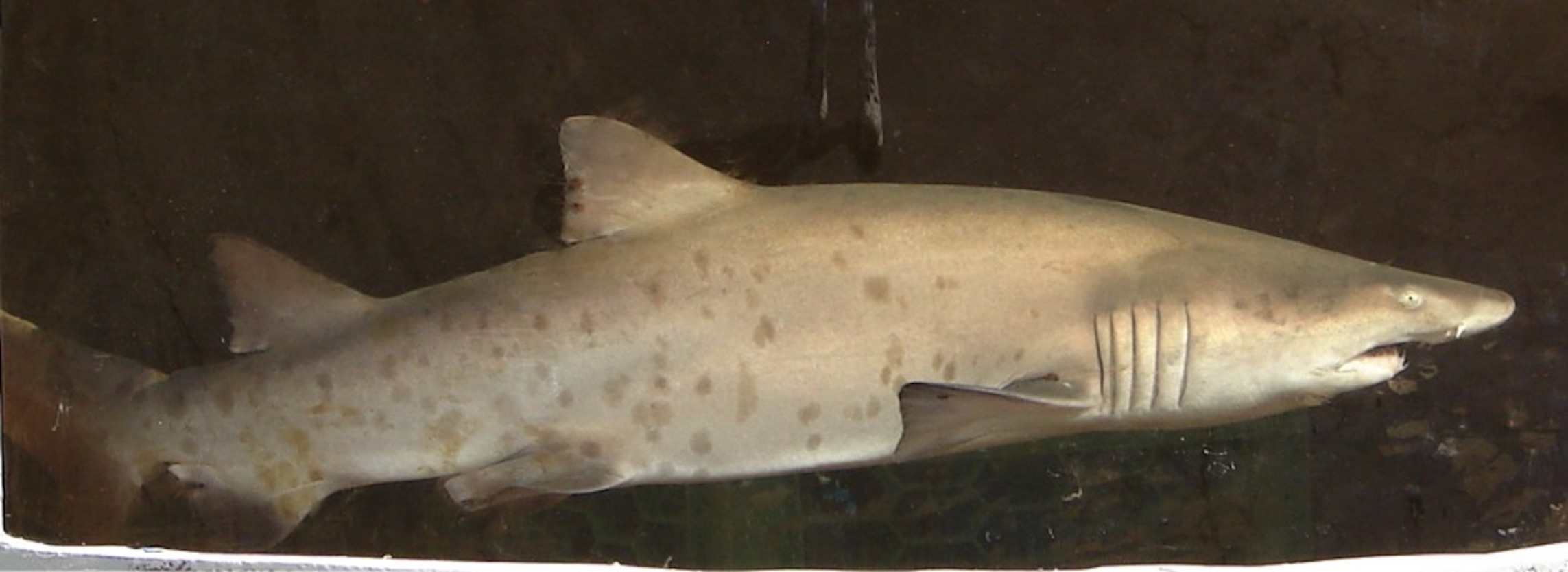
Part 1 provides historical context about this species along the East Coast and in New England in particular. Part 2 explains how acoustic telemetry is helping scientists monitor the residency, movements, and habitat use of juvenile sand tigers as well as their movement patterns over vast geographic distances and extended periods of time. This post provides an overview on some interesting findings on the presence of sand tiger sharks throughout the region.
Since the start of our juvenile sand tiger tagging project over a decade ago, we have learned a great deal about the movements of this species in New England and beyond. However, one interesting thing that we’ve learned after years of acoustic monitoring and observation is that juvenile sand tigers exist in several areas throughout New England during the summer, not just in the PKD Bay nursery. In fact, one area that appears to support a fair amount of sand tiger activity is “Boston Harbor” (collectively representing Dorchester Bay, Hingham Bay, Broad Sound, Nahant Bay, and Quincy Bay). However, while we know that sand tigers are commonly encountered in this area, the extent to which juvenile sand tigers may utilize Boston Harbor in both space and time is not well understood.
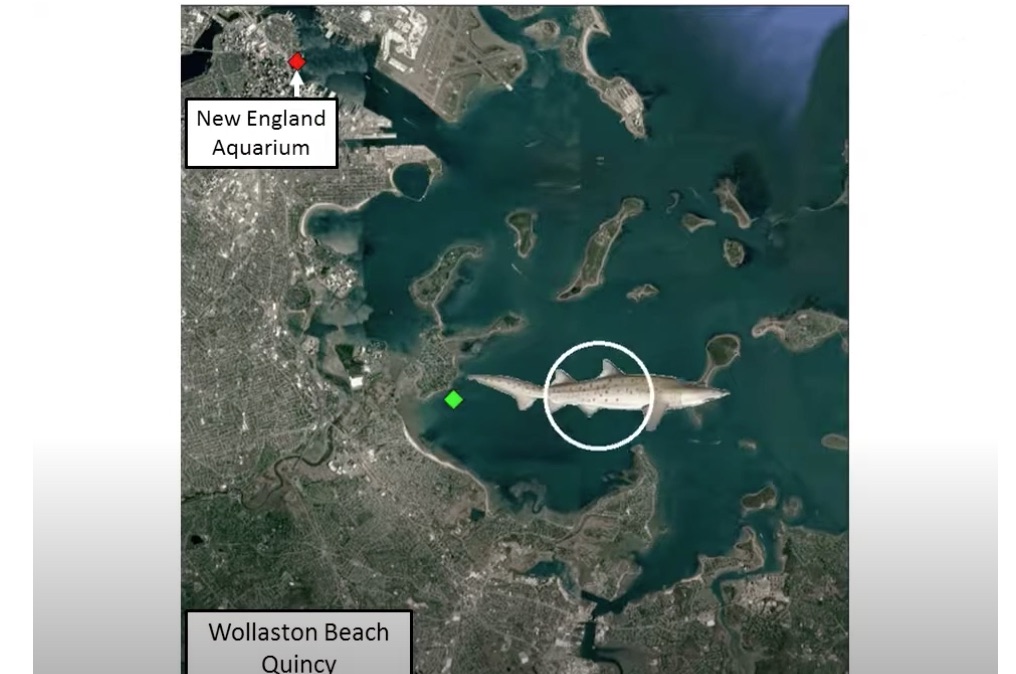
Detection History for ST1601
Researchers including Jeff Kneebone, Ph.D., associate scientist at the Anderson Cabot Center for Ocean Life, have been tracking the movements of sand tiger sharks since 2008. See where ST1601 traveled in one year.
Given the sand tigers’ known susceptibility to population decline and the growing understanding of the importance of nursery areas to the maintenance of healthy shark populations, it is important that juvenile sand tiger nursery areas be identified and characterized throughout their range. Drawing upon the experience accrued during our study of PKD Bay, in summer 2017 we plan to kick off a new study in collaboration with John Chisholm and Greg Skomal of the Massachusetts Shark Research Program that will utilize passive acoustic telemetry (the shark E-ZPass system) to investigate juvenile sand tiger presence and activity within Boston Harbor.
In summer 2016, we were able to gather some preliminary data for this project when a single female juvenile sand tiger was caught and tagged off Wollaston Beach (Quincy Bay) in late July. This shark was monitored in the vicinity of Wollaston Beach for 1.5 months after tagging, indicating that the shark exhibited strong site fidelity to this area (i.e., showed a strong preference for remaining in this one spot), which is indication that this area may play an important ecological role in supporting these young sharks. Ultimately, by working to identify these important ecological areas, we will bolster ongoing sand tiger conservation efforts in New England and beyond, and help ensure that they remain one of New England’s most common shark species for decades to come.

